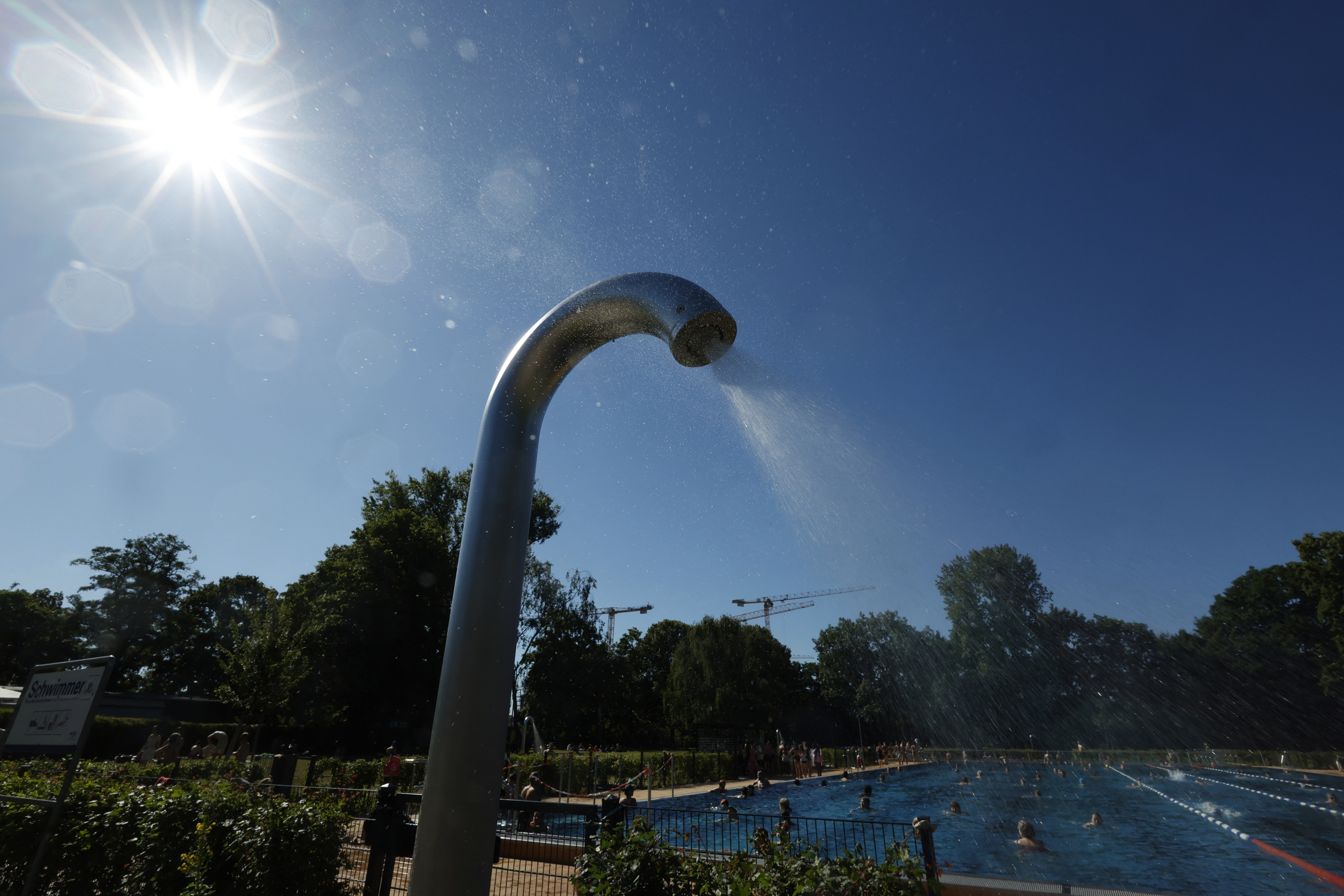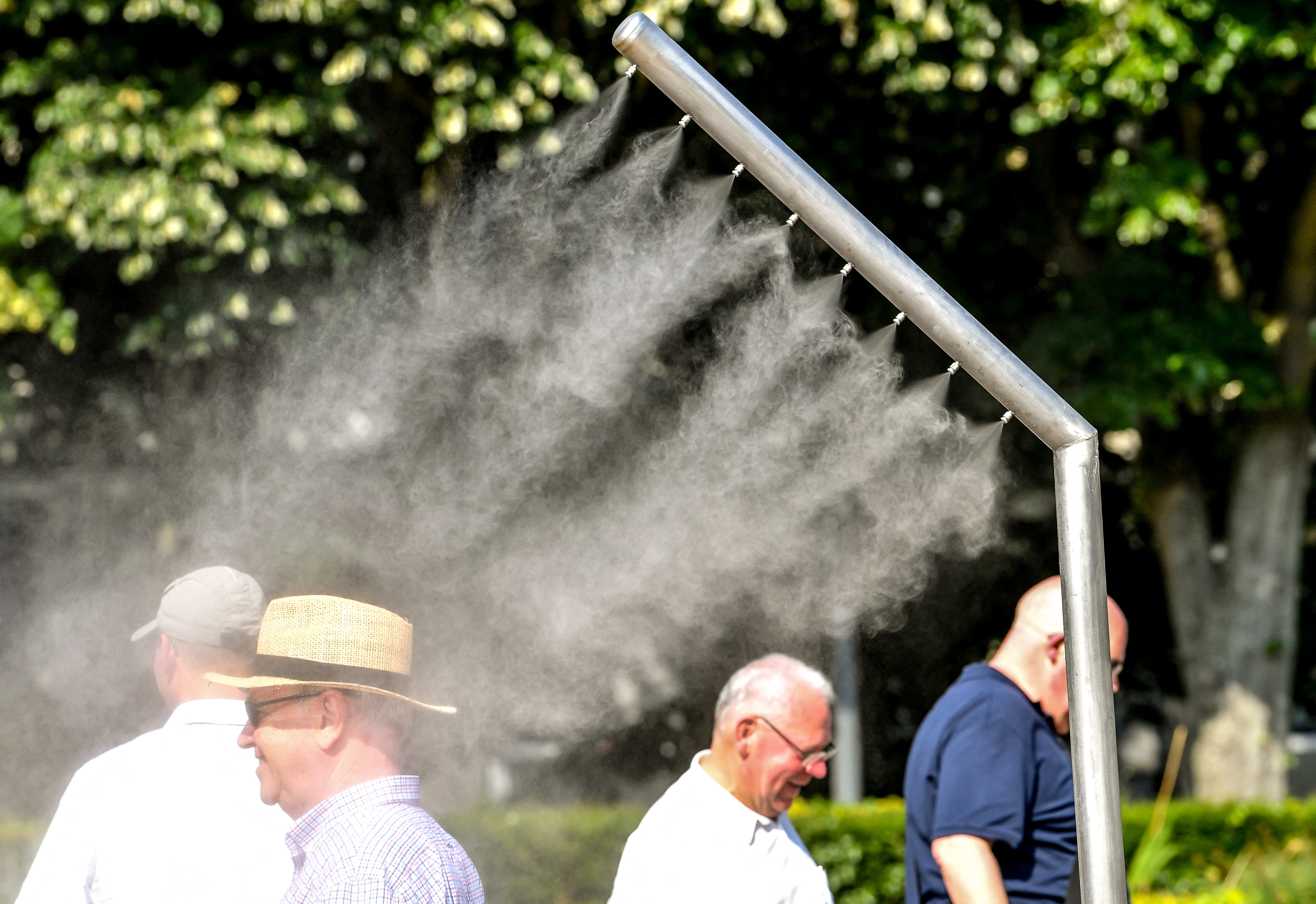The innovative sensor that warns you of the need to drink fluids to prevent dehydration

In recent weeks, the heat wave in Europe has raised alarm due to several cases of dehydration and even deaths. In Spain alone, 1,180 deaths have been attributed to heat waves between May 16 and July 13.

The sun shines on a public pool where a shower is taking place in Berlin, Germany. Photo: AFP
Within this framework, a group of researchers from the University of Texas at Austin (United States) are working on a new noninvasive portable sensor designed to measure patient hydration levels continuously and in real time.
This device could help a football player stay hydrated on a hot September afternoon , prevent a firefighter battling a blaze from becoming too dry, or simply alert an office worker when it's time to refill their water bottle. The results are published in the Proceedings of the National Academy of Sciences.
"Dehydration is a silent threat that affects millions of people every day," said Nanshu Lu, a professor in the Department of Aerospace and Mechanical Engineering in the Cockrell School of Engineering. "Our wearable sensor offers a simple and effective way to monitor hydration levels in real time, allowing people to take proactive steps to stay healthy and perform at their best."

People cool off under a sprinkler in Lille, northern France. Photo: AFP
It uses bioimpedance, a technique that measures how electrical signals travel through the body, to monitor hydration levels. Using strategically placed electrodes, the sensor sends a small, safe electrical current through the arm.
The way an electric current flows through the body depends on the amount of water in the tissues. Water is a good conductor of electricity, so hydrated tissues allow the current to pass more easily , while dehydrated tissues resist the flow. The data collected by the sensor is transmitted wirelessly to a smartphone, allowing users to monitor their hydration levels.
The researchers conducted several experiments to test the device, including a diuretic-induced dehydration study and a 24-hour free-living test.
In the dehydration study, participants took a diuretic to promote fluid loss , and their hydration levels were monitored using the wearable sensor and then compared to a urine sample. The results showed a strong correlation between changes in arm bioimpedance and body weight loss due to water loss.
"Our experiments showed that arm bioimpedance is not only sensitive to changes in hydration, but also closely aligns with total body hydration measurements ," adds Matija Jankovic, co-author of the study and a postdoctoral researcher in Lu's lab. "This means the sensor can be a reliable substitute for tracking hydration levels, even during everyday activities like walking, working, or exercising."

Mild dehydration can affect cognitive function and physical performance. Photo: AFP
Traditional methods for assessing hydration, such as urine tests or blood tests, are often invasive, time-consuming, and impractical for continuous monitoring. Commercial devices for assessing hydration often require bulky equipment and fixed setups, limiting their use in everyday life.
Hydration is essential for human health. It plays a fundamental role in maintaining organic function , regulating body temperature, and supporting vital physiological processes.
However, dehydration, a condition caused by a lack of water in the body, remains a common and often overlooked problem. Even mild dehydration can affect cognitive function, physical performance, and thermoregulation , while severe dehydration can lead to life-threatening conditions such as kidney stones, cardiovascular problems, and heat stroke.
In addition to protecting workers in extreme environments, the device has potential applications in healthcare. Continuous hydration monitoring could help diagnose and manage conditions such as kidney disease, cardiovascular problems, and chronic dehydration.
While the current version of the sensor records relative changes in hydration, future research aims to establish reference data for absolute hydration levels. This would involve collecting bioimpedance measurements from a broad population to create a baseline for comparison.
The researchers also plan to explore new designs, such as breathable electronic tattoos or sweat-wicking wearables, to improve comfort and performance during prolonged use. They hope to expand testing to larger groups and explore applications for other body segments, such as the forearm or thigh.
*With information from Europa Press
eltiempo





